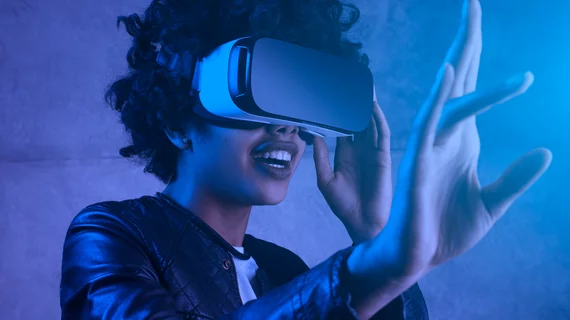FDA updates list of cleared VR, augmented reality devices, with radiology leading the way
The U.S. Food and Drug Administration on Sept. 6 updated its list of cleared devices that utilize augmented or virtual reality, with radiology leading among other specialties.
As of this month, the FDA has now authorized a total of 69 medical products that incorporate AR/VR. One of the latest is Germany-based vendor Brainlab’s Elements Viewer, which earned 510(k) clearance in May. The product incorporates radiological data, allowing users to wear mixed-reality glasses and manipulate medical images.
“The FDA has reviewed and authorized for marketing a growing number of devices through 510(k) clearance and granting of de novo requests with AR/VR across many different fields of medicine—and expects this trend to continue,” the administration said in a news release shared Tuesday, adding that it plans to periodically update the tally.
Radiology leads the list with 28 different cleared devices dating to the first one approved in January 2015 from EchoPixel Inc. in Santa Clara, California. Other augmented or virtual reality radiology devices that have earned clearance this year have included the Cube Navigator from Medical Templates AG and an augmented reality application from Sira Medical Inc. Orthopedics has the second most cleared AR/VR devices at 25 followed by physical medicine (6).
Possible uses for these devices in medicine can include pediatric diagnostics and treatments, pain management, mental health, neurological disorders, surgery planning and virtual care, the FDA noted.
“Augmented reality and virtual reality have the potential to transform healthcare, delivering new types of treatments and diagnostics and changing how and where care is delivered,” the agency noted. “Central to their potential in diagnosis and treatment is their ability to deliver both standard and entirely new types of content in highly immersive and realistic ways, remotely, and tailored to a variety of clinical contexts. Physicians, patients, and caregivers can enlist AR/VR to help them prepare for, or perform, certain treatments or procedures.
You can find the full list here, along with infographic from the FDA and other information.

